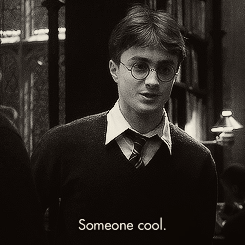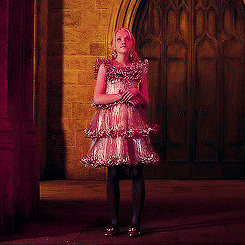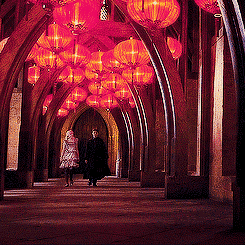Recently Finished Ursula Le Guin’s The Left Hand Of Darkness. I Don’t Remember The Last Time I Read


Recently finished Ursula Le Guin’s The Left Hand of Darkness. I don’t remember the last time I read a book as quickly as I did this one.
More Posts from Zwickygirl and Others
Massachusetts Driving Gothic
You don’t know what street you’re on. Every intersection, there’s a street sign, but it only tells you the name of the other street. Perhaps your street has no name. Perhaps it doesn’t exist.
The road has two lanes. You thought it had three, but suddenly there are two. Now three again. Now one.
Construction workers close down a street. They work for years. No one says what they’re doing, but machinery moves back and forth and great clouds of smoke go up into the sky. When they finally leave, the street looks as if they were never there.
Roads were named, back in the old times, by the city they went to. A road that went to Boston was Boston Road. But many roads lead to Boston. So there are many Boston Roads. They do not connect to each other. They are all Boston Road.
You have forgotten what a parking space looks like. You have forgotten what it means to park. You simply drive forever, in circles. It feels natural enough.
Blue lights flash in front of you, the street swarms with police; an accident? A crime? Some kind of disaster? But at the heart of the blue-clad swarm there is nothing but a single man in a yellow vest, digging a small hole by the side of the road.
You have to be in the left lane to turn right, the sign says. You have to be in the right lane to turn left. The sign that explains this is hung directly over the intersection.
The pedestrians lurch out in front of your car, heedless of the danger, of their own soft bodies and the hardness of steel. They may think your car would simply pass through them. They may be right.
You are on I-93, at rush hour, going one mile an hour. You have always been, and will always be, on I-93, at rush hour, going one mile an hour. In the neighboring cars, babies are born, old people are dying, small tribes are forming.
You are on Storrow Drive. Somehow, you do not die.

reblog if you were born in 1985 or earlier
for science

This is a turtle duck.
Reblog the turtle duck.
…
Why?
Because it’s a turtle duck.
Make the turtle duck tumblr famous.
For no reasons other than the fact that it’s a turtle duck.

Piyo Piyo Paradies and SUPERNOVA are both scanlated here:
http://arcanum-amare.livejournal.com/tag/chickens
with bonus peep!Ed icons.
Okay, so in another 20 mins, I’m gonna stream FMA 03.
I don’t know how many of you will be there but I need someone to watch it with me because you bet I’m gonna get emotional over this show





Thank you Google for the great Doodle honoring Annie Jump Cannon today!
Annie Jump Cannon (December 11, 1863 - April 13, 1941) was an American astronomer whose cataloging work was instrumental in the development of contemporary stellar classification. With Edward C. Pickering, she is credited with the creation of the Harvard Classification Scheme, which was the first serious attempt to organize and classify stars based on their temperatures. She was nearly deaf throughout her career.
(from Wikipedia)
we found love (1/1, 19811 words) Relationship: Bilbo Baggins/Thorin Oakenshield Rating: Teen Tags: Modern AU, Mafia AU of sorts, Romance, Fluff, Angst with a Happy Ending Summary: In which Bilbo meets Thorin and life takes unexpected turns. —- Hey, if y’all enjoy this fic at all, please reblog this so more people can too!
This!


The mean girls of the White Council

The Whirlpool Galaxy - Sparkling with X-Rays
Nearly a million seconds of observing time with NASA’s Chandra X-ray Observatory has revealed a spiral galaxy similar to the Milky Way glittering with hundreds of X-ray points of light.
This galaxy’s official name is Messier 51 (M51) or NGC 5194, but it often goes by its nickname of the “Whirlpool Galaxy.” Like the Milky Way, the Whirlpool is a spiral galaxy with spectacular arms of stars and dust. M51 is located about 30 million light years from Earth, and its face-on orientation to Earth gives us a perspective that we can never get of our own spiral galactic home.
By using Chandra, astronomers can peer into the Whirlpool to uncover things that can only be detected in X-rays. In this new composite image, Chandra data are shown in purple. Optical data from the Hubble Space Telescope are red, green, and blue.
Credit: NASA/Hubble/Chandra/Harvard
-
 ghaist liked this · 6 months ago
ghaist liked this · 6 months ago -
 spearcast liked this · 8 months ago
spearcast liked this · 8 months ago -
 umbairnatrium reblogged this · 9 months ago
umbairnatrium reblogged this · 9 months ago -
 kaispiral liked this · 9 months ago
kaispiral liked this · 9 months ago -
 swordhounds liked this · 1 year ago
swordhounds liked this · 1 year ago -
 crowbarrd liked this · 1 year ago
crowbarrd liked this · 1 year ago -
 ravenousgf liked this · 1 year ago
ravenousgf liked this · 1 year ago -
 twoheadeddyke liked this · 1 year ago
twoheadeddyke liked this · 1 year ago -
 danieco liked this · 2 years ago
danieco liked this · 2 years ago -
 sabersunrise reblogged this · 2 years ago
sabersunrise reblogged this · 2 years ago -
 sabersunrise liked this · 2 years ago
sabersunrise liked this · 2 years ago -
 betweenheroesandvillains liked this · 2 years ago
betweenheroesandvillains liked this · 2 years ago -
 dying-suffering-french-stalkers reblogged this · 2 years ago
dying-suffering-french-stalkers reblogged this · 2 years ago -
 dying-suffering-french-stalkers liked this · 2 years ago
dying-suffering-french-stalkers liked this · 2 years ago -
 tersyne liked this · 3 years ago
tersyne liked this · 3 years ago -
 grippysockthot reblogged this · 3 years ago
grippysockthot reblogged this · 3 years ago -
 theparanoidandroid reblogged this · 3 years ago
theparanoidandroid reblogged this · 3 years ago -
 theparanoidandroid liked this · 3 years ago
theparanoidandroid liked this · 3 years ago -
 recreationaldivorce liked this · 3 years ago
recreationaldivorce liked this · 3 years ago -
 katabas1st liked this · 3 years ago
katabas1st liked this · 3 years ago -
 the-entire-chinese-population liked this · 3 years ago
the-entire-chinese-population liked this · 3 years ago -
 praise-the-lord-im-dead liked this · 3 years ago
praise-the-lord-im-dead liked this · 3 years ago -
 huachicken reblogged this · 3 years ago
huachicken reblogged this · 3 years ago -
 brightlady-lise liked this · 3 years ago
brightlady-lise liked this · 3 years ago -
 yevrosima-the-third liked this · 3 years ago
yevrosima-the-third liked this · 3 years ago -
 yevrosima-the-third reblogged this · 3 years ago
yevrosima-the-third reblogged this · 3 years ago -
 foughfaugh reblogged this · 3 years ago
foughfaugh reblogged this · 3 years ago -
 foughfaugh liked this · 3 years ago
foughfaugh liked this · 3 years ago -
 xmentsch liked this · 3 years ago
xmentsch liked this · 3 years ago -
 explodingsilver liked this · 3 years ago
explodingsilver liked this · 3 years ago -
 ev1lnun liked this · 4 years ago
ev1lnun liked this · 4 years ago -
 nexusnines liked this · 4 years ago
nexusnines liked this · 4 years ago -
 soapoey reblogged this · 4 years ago
soapoey reblogged this · 4 years ago -
 soapoey liked this · 4 years ago
soapoey liked this · 4 years ago -
 jolselin liked this · 4 years ago
jolselin liked this · 4 years ago -
 superkvothefan liked this · 4 years ago
superkvothefan liked this · 4 years ago -
 brooklyntobattlefield reblogged this · 4 years ago
brooklyntobattlefield reblogged this · 4 years ago -
 a-be-ba-blom liked this · 4 years ago
a-be-ba-blom liked this · 4 years ago -
 cooleggboy reblogged this · 4 years ago
cooleggboy reblogged this · 4 years ago -
 stopcallingmeapollo liked this · 4 years ago
stopcallingmeapollo liked this · 4 years ago -
 bibliobotanist liked this · 4 years ago
bibliobotanist liked this · 4 years ago -
 lyrasoxford reblogged this · 4 years ago
lyrasoxford reblogged this · 4 years ago -
 kellyhickss liked this · 4 years ago
kellyhickss liked this · 4 years ago -
 rothfaux reblogged this · 4 years ago
rothfaux reblogged this · 4 years ago -
 annamarie-mirage liked this · 4 years ago
annamarie-mirage liked this · 4 years ago -
 breakingdawnpt2 liked this · 4 years ago
breakingdawnpt2 liked this · 4 years ago -
 activatedsludge liked this · 4 years ago
activatedsludge liked this · 4 years ago